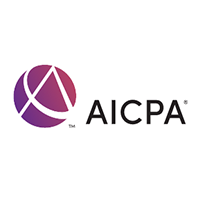
SAS No. 136 will affect your 401(k) audits — be prepared. Become comfortable around the new standard to continue performing ERISA-compliant audits.
5/16/2023 8:00am - 12:00pm | Online | AICPA
Members: $213.00, Non-members: $261.00
CPE Categories: Accounting (0.5 CPE), Auditing (3.5 CPE)
Lay the groundwork for effective ERISA audits
The goal of Statement on Auditing Standards (SAS) No. 136 is to enhance audits performed under the Employee Retirement Income Security Act (ERISA). It will be important for you to understand the clarified responsibilities of auditors and clients, and ensure that you're familiar with best practices of a 401(k) audit and reporting.
In the webcast, we'll discuss how to:
- Identify audit procedures required for investment activity, contributions, benefit payments, or withdrawals at the participant level
- Alter your procedures depending on the type of audit and risk assessment
- Determine the classification of common plan investments
- Use GAAP presentation and disclosure requirements for EBP financial statements
Topics also covered in this webcast include:
- Procedures needed to determine the plan’s tax status
- Testing line items of statement of net assets available for benefits and the statement of changes in net assets available for benefits
- Related parties, parties in interest, and prohibited transactions
- Nuance in Form 11-K filers
Instructor: Randy M. Dummer
Auditors of Employee benefit plans
Practitioners considering the addition of EBP audits as a service offering
accountants in business and industry responsible for company Benefits
Identify auditing procedures for the statement of net assets available for benefits and the statement of changes in net assets available for benefits.
Recognize the types and classification of common plan investments.
Distinguish plan investment audit procedures based upon type of audit and risk assessment.
Identify audit procedures at the participant level required for investment gains (or losses), contributions, and benefit payments or withdrawals.
Recognize the presentation and disclosure requirements in accordance with GAAP.
Identify audit considerations for related parties, parties in interest, and prohibited transactions; a plan’s tax status and Form 5500; Form 11K filers; and related changes introduced by SAS No. 136
Auditing the statement of net assets available for benefits
Types and classification of common plan investments
Plan investment audit procedures based upon type of audit and risk assessment
Auditing the statement of changes in net assets available for benefits
Audit procedures at the participant level required for investment gains (or losses), contributions, and benefit payments or withdrawals
Presentation and disclosure requirements in accordance with GAAP
Audit considerations related to related parties, parties in interest and prohibited transactions, a plan’s tax status and Form 5500, and Form 11K filers, and related changes introduced by SAS No.136
© Copyright 2025 KSCPA | All Rights Reserved